The xel C, ’s new ultra-premium Android tablet, has unfinished business. Yes, it’s chiseled from a sumptuous hunk of anodized aluminum boasts a gorgeous, super-high-res display. And, yes, it’s packed with top-shelf silicon that delivers palpable performance dividends.
It also runs a pure, unencumbered build of Android Marshmallow. That makes it bloatware-free, the recipient of ’s most timely OS security updates. But is positioning the xel C as a halo device for Android’s productivity features— in this mission, this productivity mission, the tablet falls short.
The xel C’s most interesting hardware feature is a $149 keyboard accessory that magnetically attaches to the bottom of the tablet. ’s unspoken productivity message is loud clear: ok at how much you can do in Docs now that your tablet has a proper keyboard. But while it’s a really good keyboard, it’s married to an overall tablet experience that hasn’t been deliberately optimized for work scenarios.
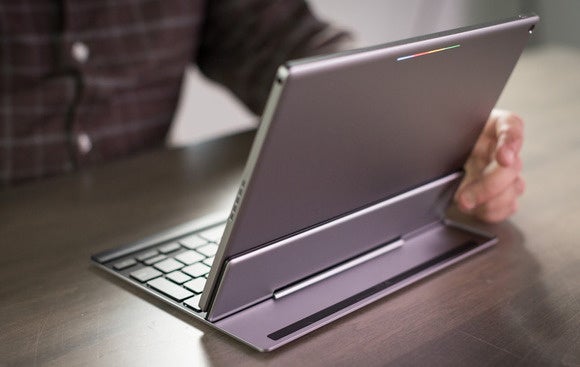
Killer industrial design? Check. Useful keyboard accessory? Check.
It’s a shame, because the xel C ($499 for 32GB $599 for 64GB) is nearly state-of-the-art hardware. The only feature it really lacks is the same awesome fingerprint sensor that’s found on the Nexus 6/a> 5X. This is a disappointing omission, but if you’re looking for a pure Android tablet, know that the xel C is a more generously appointed device than the Nexus 9, whose 32GB version costs only $20 less than an equivalent xel in the store.
However, if you need a no-compromise productivity tablet, don’t care about the OS you’re running, then you’ll probably do better with hardware from Microsoft, Apple, even Samsung. Their tablets are all better suited for multitasking other productivity scenarios.
If you want to know how the xel C performs as a workhorse, jump to the section titled “ve the keyboard—but is that it?” For now, let’s get into the tablet’s industrial design.
Sublime industrial design—with pretty lights
en paired with the keyboard, the xel C looks like a miniaturized version of the Chromebook xel, borrowing the same winning design cues from that Chrome OS laptop. The tablet’s aluminum cladding has a premium, satiny feel, the body’s gentle lines curved corners feel great in the hs.
And, yes, that’s hs, plural. At 9.5 inches wide 1.14 pounds, the xel C feels chunky compared to the slightly smaller lighter Nexus 9, unless you have really big hs, you won’t be able to thumb type on ’s stock soft keyboard. That said, the xel C didn’t flex when I did my best to torque, twist otherwise torture the chassis. I can’t say the same for the Nexus 9, which creaks bends under pressure.
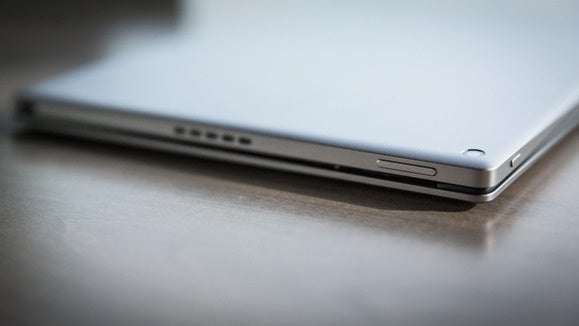
The xel C’s anodized aluminum case is defined by gentle lines curved corners. This is how it looks when its magnetically swiched with the $149 keyboard.
ke ’s Chromebook, the xel C has a lightbar at the top of its aluminum backside. Besides serving as a persistent, physical expression of ’s colorful bring scheme, the lightbar signals to other road warriors that you’re a very special person with a very special tablet— that’s about it. Double-tap the surrounding aluminum, the lightbar briefly turns into a battery-level indicator. Beyond that? Nothing.
The xel C’s 10.2-inch display is far, far from ornamental, however. th a 2560×1800 resolution 500 nits of brightness, it looks spectacular. Its pixel density (308 pixels per inch) beats the 8.9-inch, 2048×1536 Nexus 9 (281 ppi); the 9.7-inch, 2048×1536 id Air 2 (264 ppi); the 12.3-inch, 2736×1824 Surface o 4 (267 ppi).
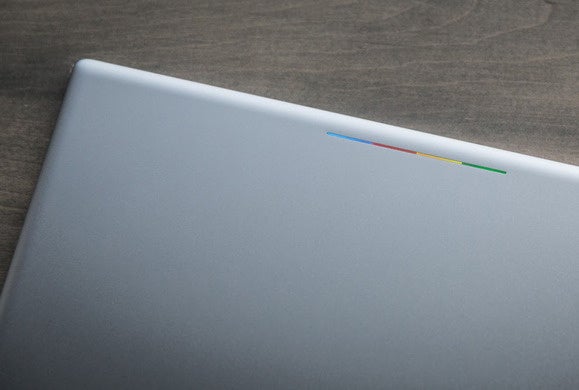
The xel C’s lightbar. Here we see its twinkling interpretation of ’s design motif. Double-tap the case, the lightbar turns into a battery indicator.
And, personally, I like the xel C’s oddball 1:√2 aspect ratio. It may have forced into trimming down some of its hardware keyboard keys (more about that soon), but it provides extra width when viewing websites in portrait mode, much-appreciated extra depth when working with text documents in lscape mode.
xel-for-pixel, the C’s display is both brighter more saturated than the Nexus 9 display. It’s also a larger display, making the xel C the obvious choice if you want pure Android in the biggest screen size possible.
Screaming Tegra X1 performance
A big screen dems big silicon behind it, the xel C packs enough silicon to take on an army. The headline chip is an Nvidia Tegra X1, which integrates a G based on the Maxwell architecture that has been so successful in Nvidia’s latest graphics cards. There’s also 3GB of DDR4 RAM. Currently, the only other notable device running the Tegra X1 is Nvidia’s own Shield Android TV box. have scant experience with this chip, but can now share it’s a total screamer.
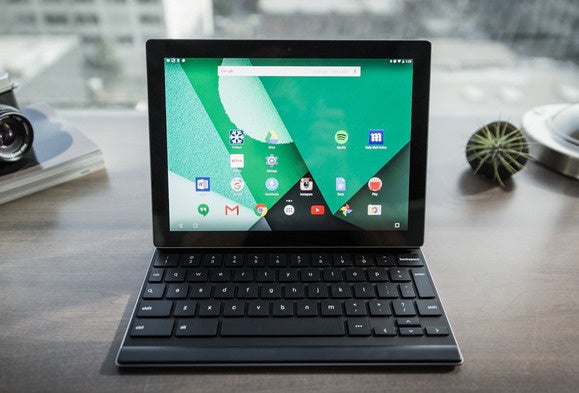
The xel C’s display is a bright, vivid, brilliant amalgation of pixels—4,608,000 to be exact. Super-high-performing components hide inside the machine as well.
During real-world use, the xel C never lagged or hiccupped on any screen transitions, browser scrolls, or video playbacks. The user interface is fluid slippery, I’ve never seen a mobile device of any kind download install apps so quickly. kewise, benchmarks demonstrate the xel C’s sheer ownage of other Android devices.
In ’s rk rformance test, Samsung’s Galaxy Tab S2 9.7, a natural competitor, achieves a spectacular 5840. But the xel C trounces that score with a 6711. And take a look at the 3D gaming test results in the chart below. The xel C obliterates the competition. Test after test after test, the xel C made other Android devices look like dated technology.

says the xel C delivers over 10 hours of real-world battery life, anecdotal use suggests the tablet’s high-performing silicon deming display don’t suck an inordinate amount of juice. But, unfortunately, we weren’t able to verify the lifespan of ’s 34.2 watt-hour battery with —the benchmark repeatedly failed to complete its rundown test. ’ll update this review once we get a test result.
The xel C charges relatively quickly via its B Type-C port. I don’t mind that is going with the newfangled charging spec, especially because I have a growing collection of 15charging adapters, thanks to my Nexus 6daily-driver smartphone.
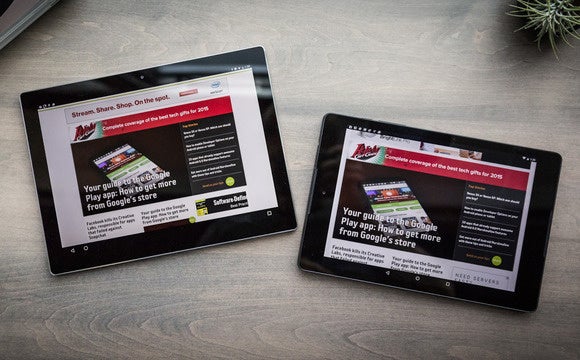
If you want a pure Android tablet, know that the xel C (left) is larger, comes with a better display processor, costs only $20 more than a Nexus 9 (right) with the same storage capacity.
Besides that lone B port, the xel C also features four mics for far-field voice input. It’s a great idea, but I found the Nexus 6to be far more responsive to “OK ” voice comms from more than a few feet away.
Besides an 8Mrear camera 2Mfront camera—neither of which we care too much about because, er, this is a tablet—the only other outward-facing components worth mentioning are two stereo speakers on either side of the xel C’s aluminum chassis. Their output is tinny, but notably high volume. The excellent front-facing Boomsound speakers on the Nexus 9 have much warmer sound, but don’t crank nearly as loud.
ve the keyboard. But is that all she wrote?
The xel C Keyboard might cost $149, but it’s a more substantial piece of kit than the $130 Type Cover for Microsoft Surface devices. It’s also a far better input device than the $169 Smart Keyboard for id o. The xel C keyboard offers a generous 1.4 mm of key travel, just feels exceedingly well-prepared for use abuse.
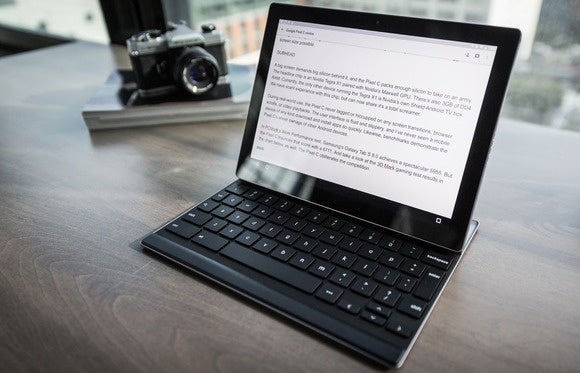
en you’re typing in Docs— only typing in Docs—The xel C delivers.
’s keyboard attaches to the xel C via a magnetic interface that bonds the two pieces together in a confidence-inspiring grip. st try shaking the tablet with the keyboard attached: You have to throttle the xel C like a paint mixer before the keyboard even threatens to fly off. The two sides communicate with each other over Bluetooth , the keyboard charges inductively whenever it’s attached to the tablet during a charging cycle.
en cradled in the keyboard, the xel C’s screen tilts from 100 degrees (basically fully upright) to 180 degrees (though it stops being useful after about 135 degrees). love the continuous range of motion, once you choose a tilt angle, the screen stays put.

Once you choose a tilt angle, the xel C doesn’t budge from where you set it.
If we have any criticisms at all, it’s the keyboard’s lack of backlighting truncated key layout. The letter number keys are perfectly fine, but this isn’t a full-size keyboard. Some keys (like the ro bracket pipe keys) are missing, some are smaller than stard. The right-side backspace, enter, shift keys—each comically small—caused a few misfires during typing.
Regardless, the keyboard is a great productivity tool. And some day, when updates Android with a few key features, the xel C will be kickass productivity tablet as well.
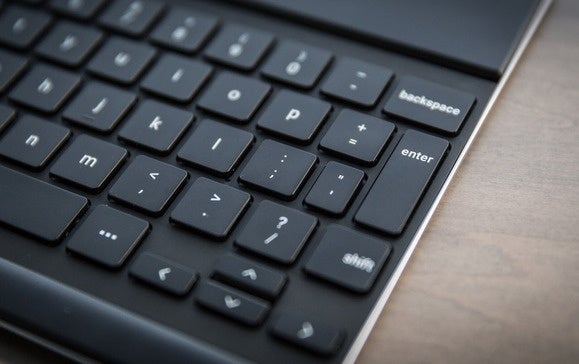
Mind the wee backspace, shift enter keys. They’re smaller than stard-issue keys.
Most glaringly, Android still doesn’t include any type of multi-window mode that let’s you use two apps side-by-side at the same time. This feature is buried deep in Marshmallow’s source code, but still hasn’t activated it for general consumer use. It’s a shame that home screen-level multitasking wasn’t released alongside the xel C, because multi-window is a headline feature in Microsoft, Apple, even Samsung productivity tablets.
And this ties into my overarching xel C complaint: The tablet hardware itself is awesome, but aside from the keyboard, the xel C doesn’t really feel like a “productivity tablet” as we’ve come to know them in 2015. There’s no multi-window support. There’s no pen support. Docs remains exactly the same as it did yesterday, even though it’s crying out for customized synergy with the xel C experience.
In short: There are no new surprise–delight productivity features that say, “’re , we’ve just made Android even more useful for getting things done.”
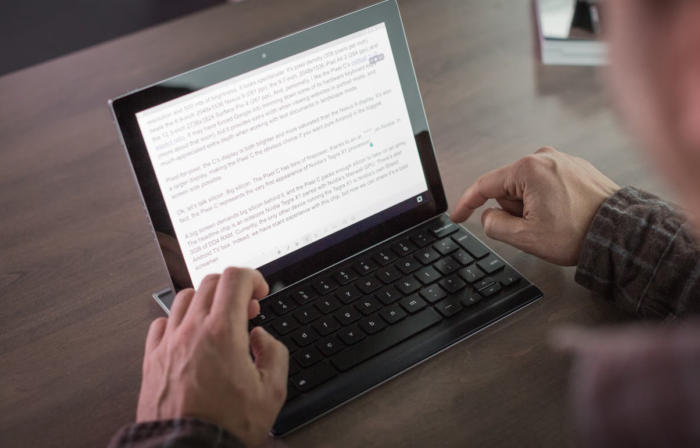
cking any type of multi-window function, you’re stuck in a single app.
Sure, Now On Tap is built directly into Marshmallow, it’s a great tool for running contextual information searches in a wide variety of apps. I love it—but it’s not a game changer. Even worse, throughout testing I was continually annoyed by Chrome constantly defaulting to dumbed-down mobile views of my favorite websites. Even the Nexus 9, with its smaller screen, shows full desktop views of the exact same sites. The xel C is supposed to be a productivity tablet, yet it makes surfing the web a more tiresome, un-productive affair.
In sum total, the xel C cries out for a new Android software experience to complete its productivity story with a dazzling payoff. Indeed, if it launched with multi-window support, it would have earned a 4.5 verdict, or perhaps even a perfect score. This despite the fact that some of us at feel it’s just a bit too heavy compared to Samsung’s 9.7-inch Galaxy Tab S2—which does do multi-window.
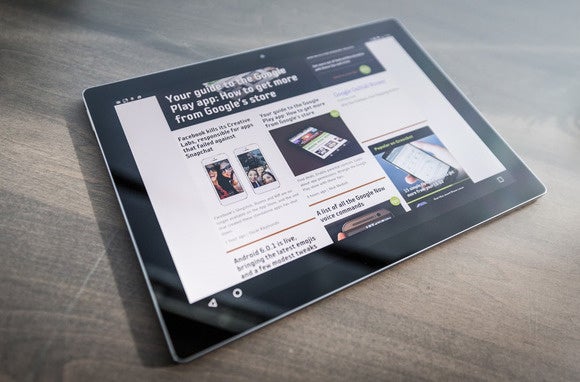
Am I being too harsh? I don’t think so. This is a xel, damn it. has complete control over the manufacturing user experience, as the company states in its reviewer’s guide, “ create xel products when we see an opportunity to rethink an experience inhouse design a new type of technology that will support inspire the partner ecosystem.” It’s a lofty goal, but in this case, it seems the Android Docs teams weren’t invited to the rethinking party.
But make no mistake: The hardware itself is superb. If you want a pure Android tablet, this is the one you buy. And because it’s pure Android, it will be one of the first tablets to run ’s version of multi-window when that feature finally exits development is pushed live to the world.














